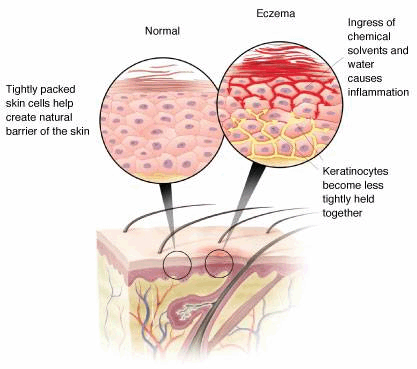Potassium permanganate for Eczema Treatment info Chemical Man
Potassium permanganate is an inorganic chemical compound and medication. As a medication it is used for cleaning wounds and dermatitis.It has the chemical formula KMnO4 and is a salt consisting of K+ and MnO−4 ions. It is a strong oxidizing agent. It dissolves in water to give intensely pink or purple solutions, the evaporation of which leaves prismatic purplish-black glistening crystals.Potassium permanganate is a common chemical compound that combines manganese oxide ore with potassium hydroxide.
It was first developed as a disinfectant in 1857. Since then, it’s been widely used to treat a variety of skin conditions, including fungal infections. In many countries, including the United States, you’ll need a prescription from your doctor to receive potassium permanganate.
What does it treat?
When applied to your skin, potassium permanganate kills germs by releasing oxygen when it meets compounds in your skin. It also acts as an astringent, which is a drying agent.
Some of the conditions that potassium permanganate can help treat include:
Infected eczema.
If you have eczema with blisters, potassium permanganate can help to dry them out.
Open and blistering wounds. Potassium permanganate is used as a wet dressing for wounds on your skin’s surface that are blistered or oozing pus.
Athlete’s foot and impetigo.
Potassium permanganate can help to treat both bacterial and fungal skin infections such as athlete’s foot and impetigo.
How do I use it?
Before applying potassium permanganate to your skin, it’s important to dilute it with water. Most medical uses require a dilution of 1 part to 10 when using a 0.1% potassium permanganate solution.To achieve an appropriate dilution using potassium permanganate 0.1% solution, combine 1 part potassium permanganate with 10 parts hot water. Undiluted potassium permanganate has a striking purple color, but a diluted solution should be pink.Potassium permanganate must be diluted since undiluted solution may cause burns. Even with dilution it may irritate the skin, and with repeated use may still cause burns.Potassium permanganate also comes in 400-milligram (mg) tablets. To utilize the tablets in a bath soak, dissolve 1 tablet in 4 liters of hot water before pouring into the bath. The bath soak may be repeated twice daily for two days.
Here are some guidelines on how to use potassium permanganate for specific conditions:
Infected eczema. Use or create a dilution of 1 part in 10,000. Add it to a basin or bath tub and soak the affected part of your body.
Superficial wounds. Apply a dilution of 1 part in 10,000 to a bandage and apply it over your wound. Change the bandage two to three times a day.Athlete’s foot. For severe infections, soak your foot in a 1 part in 10,000 dilution of potassium permanganate every eight hours. Depending on how severe your infection is, your doctor might prescribe a stronger solution.
Impetigo. Gently rub a dilution of 1 part in 10,000 on the affected skin to removed loose bits of skin.
Depending on your condition, your doctor might instruct you to create a stronger solution with a dilution of 1 part in 7,000. To achieve this, mix 1 part potassium permanganate with 7 parts hot water. This will create a slightly darker pink liquid.


Leave a comment